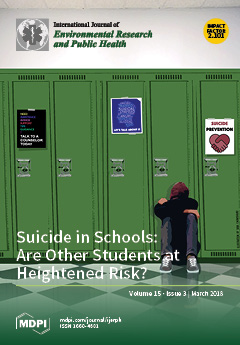Antibiotics are widely used in aquaculture, however, this often results in undesirable ecological effects. To evaluate the occurrence, temporal variations, and ecological risk of antibiotics in five crab ponds of Lake Guchenghu Basin, China, 44 antibiotics from nine classes were analyzed by rapid
[...] Read more.
Antibiotics are widely used in aquaculture, however, this often results in undesirable ecological effects. To evaluate the occurrence, temporal variations, and ecological risk of antibiotics in five crab ponds of Lake Guchenghu Basin, China, 44 antibiotics from nine classes were analyzed by rapid resolution liquid chromatography-tandem mass spectrometry (RRLC-MS/MS). Twelve antibiotics belonging to six classes were detected in the aqueous phase of five crab ponds, among which sulfonamides and macrolides were the predominant classes, and six compounds (sulfamonomethoxine, sulfadiazine, trimethoprim, erythromycin-H
2O, monensin, and florfenicol) were frequently detected at high concentrations. In general, the antibiotic levels varied between different crab ponds, with the average concentrations ranging from 122 to 1440 ng/L. The antibiotic concentrations in crab ponds exhibited obvious seasonal variations, with the highest concentration and detection frequency detected in summer. Multivariate analysis showed that antibiotic concentrations were significantly correlated with environmental variables, such as total organic carbon, phosphate, ammonia nitrogen, and pH. Sulfadiazine, clarithromycin, erythromycin-H
2O, and ciprofloxacin posed a high risk to algae, while the mixture of antibiotics could pose a high risk to aquatic organisms in the crab ponds. Overall, the usage of antibiotics in farming ponds should be comprehensively investigated and controlled to preserve a healthy aquaculture ecosystem.
Full article





